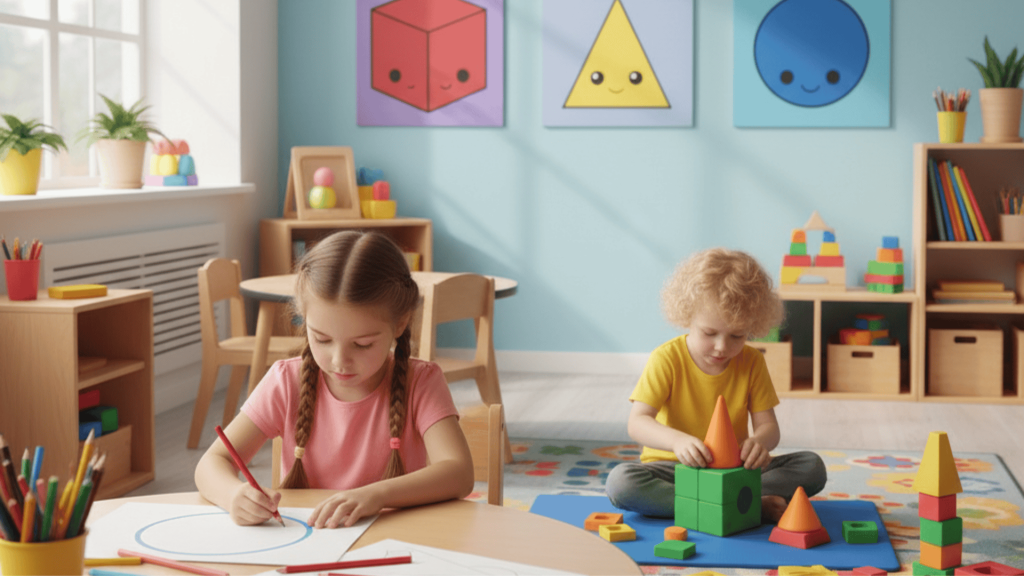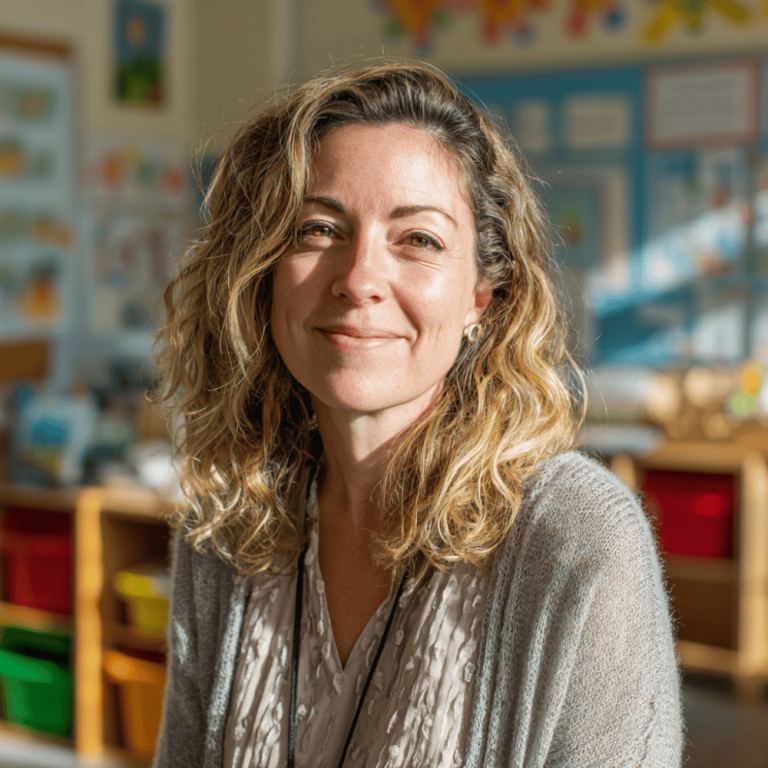Learning shapes in kindergarten is one of the first steps that helps kids build math and problem-solving skills.
I’ve found that teaching shapes can be fun when it mixes worksheets, crafts, and hands-on play. Kids get excited when they can trace, color, or hunt for shapes around the room, and that makes the lessons stick.
In this guide, I’ll share the basic shapes kids need to know, creative activities to try at home or in the classroom, and the best printable worksheets to make learning easier.
My goal is to keep it simple and practical, so teachers and parents can use these ideas right away. Shapes are all around us, and learning them should feel exciting.
What are the Core Shapes for Kindergarten?
When kids start learning about shapes, it’s best to keep things simple and clear. The core shapes build the foundation for later math skills and help children notice patterns in the world around them.
Common 2D Shapes Kids Learn First
- Circle – round with no corners
- Square – four equal sides and four corners
- Triangle – three sides and three corners
- Rectangle – four sides with two longer and two shorter
- Hexagon – six sides and six corners
Intro to 3D Shapes
- Cube – like a box, with equal squares on each side
- Sphere – like a ball, perfectly round
- Cone – like an ice cream cone
- Cylinder – like a can or tube
These basic shapes are all around us, and teaching them early helps kids make real-world connections. Starting with these gives children confidence and makes moving on to bigger concepts much easier.
Kindergarten Shapes Printable Worksheets
Printable worksheets are one of the easiest ways to help kids practice shapes. They let children trace, color, and match shapes at their own pace, which makes learning feel simple and fun.
These worksheets work well both in the classroom and at home, giving teachers and parents a ready-to-use tool without much preparation.
To make it even easier, I’ve included a free set of kindergarten shapes worksheets you can download and print right away. Using them helps kids see, practice, and remember shapes in different ways.
[Download Free Kindergarten Shapes Worksheets (PDF)]
Step-by-Step Plan to Teach Shapes for Kindergarten
Teaching shapes work best when lessons build on each other. I like using a weekly plan because it gives kids time to practice, repeat, and grow confident before moving on.
Week 1: Name & Notice
Start by introducing the most common shapes: circle, square, triangle, and rectangle. Use trace-and-color worksheets to help kids recognize the names and forms.
Go on a shape hunt around the classroom or house so children can point out shapes they see every day. Keeping it hands-on makes the learning more memorable.
Week 2: Sort & Compare
This week is all about noticing differences. Teach kids to look at sides, corners, and curves when sorting shapes. Give them cards or cut-outs and ask them to group similar ones together.
Talking through what makes each shape unique helps them build math vocabulary naturally.
Week 3: Build & Model
Now it’s time to make shapes with their hands. Use clay, playdough, or craft sticks to create flat shapes, and introduce blocks to show 3D shapes.
Kids love building towers, cones, and cylinders, and it helps them connect shapes to real objects. These activities also support fine motor skills while reinforcing what they’ve learned.
Week 4: Compose & Create
Encourage children to use shapes to design pictures or simple scenes, like a house made of rectangles and triangles. Cut-and-paste activities work well here because kids get to combine shapes into something new.
This not only strengthens shape recognition but also sparks creativity and problem-solving. They start to see how shapes fit together in the bigger picture.
A step-by-step plan like this keeps shape learning fun, steady, and meaningful for young children.
Hands-On & Crafty Kindergarten Shape Activities
Kids learn best when they can move, build, and create. That’s why I like to mix simple hands-on activities with fun crafts to make shapes come alive.
| Activity Type | Ideas | How It Helps Kids Learn |
|---|---|---|
| Hands-On | Shape Hunt | Encourages kids to spot shapes in real life, building awareness. |
| Tape Shapes on the Floor | Adds movement and makes shape recognition active and fun. | |
| Playdough Mats | Strengthens fine motor skills while forming 2D shapes. | |
| Geoboards | Teaches sides and corners by stretching bands into shapes. | |
| Crafty | Shape Crowns | Lets kids cut and glue shapes, building recognition through art. |
| Shape Monsters | Combines different shapes into creative faces for practice. | |
| Paper Quilts | Helps kids compose larger pictures from small shapes. | |
| Recycled 3D Models | Uses everyday items to explore cubes, cylinders, and cones. |
These activities give kids more than worksheets – they let them touch, build, and imagine. Mixing crafts with play keeps shape learning fun and memorable.
Conclusion
Learning shapes in kindergarten sets the stage for math, problem-solving, and everyday awareness. Shapes are everywhere, from the toys children play with to the buildings they see outside.
Using worksheets, activities, and crafts makes learning both structured and exciting. Kids not only recognize shapes but also learn how to compare, build, and create with them.
A mix of practice and play works best because it keeps children curious and involved. With steady practice, they grow more confident in naming and using shapes. Most importantly, they see that shapes are part of the world around them.
For more ideas, check out my other blogs on early learning topics like numbers, colors, and fun classroom activities.











